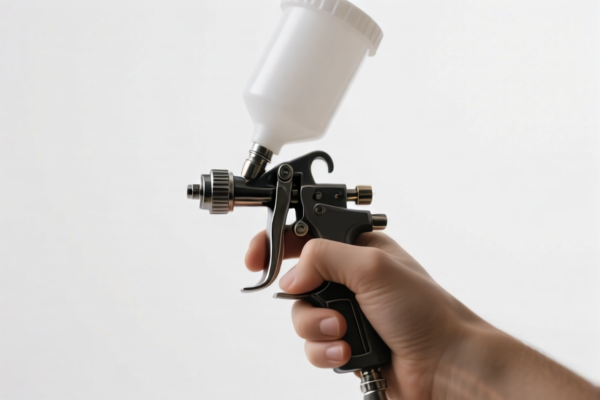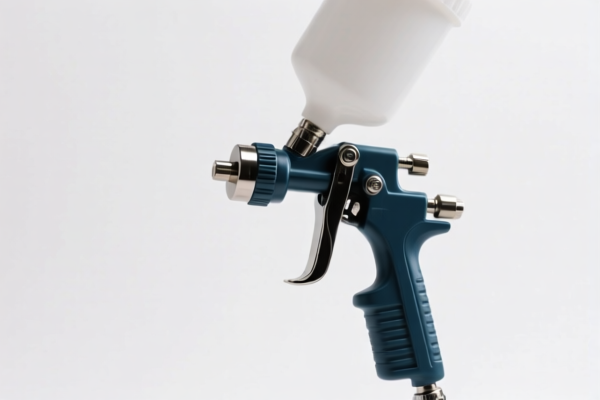| HS Code | Official Doc | Tariff Rate | Origin | Destination | Effective Date |
|---|---|---|---|---|---|
| 8424201000 | Doc | 57.9% | CN | US | 2025-05-12 |
| 8479899599 | Doc | 57.5% | CN | US | 2025-05-12 |
| 9616100000 | Doc | 37.5% | CN | US | 2025-05-12 |
| 9616200000 | Doc | 34.3% | CN | US | 2025-05-12 |




Spraying Tool
A spraying tool, broadly defined, is any device used to apply a liquid or finely dispersed material as a mist or coating. These tools are employed across a wide range of applications, from artistic endeavors to industrial processes and everyday household tasks.
Materials Applied
Spraying tools are versatile and can handle a variety of materials, including:
- Paints & Coatings: The most common application, encompassing water-based paints, solvent-based paints, lacquers, varnishes, primers, and specialty coatings.
- Chemicals: Used for applying pesticides, herbicides, fertilizers, cleaning agents, disinfectants, and industrial chemicals.
- Water: Employed in irrigation, misting systems, and cleaning applications.
- Automotive Fluids: Used for applying lubricants, waxes, and detailing sprays.
- Cosmetics & Personal Care: Aerosol sprays for hairspray, deodorants, perfumes, and sunscreens.
Purpose & Function
The primary purpose of a spraying tool is to break down a liquid into small droplets and propel them onto a surface. This achieves several benefits:
- Even Distribution: Provides a uniform coating, reducing streaks and unevenness.
- Speed & Efficiency: Covers large areas quickly compared to brushes or rollers.
- Access to Difficult Areas: Reaches crevices, corners, and intricate surfaces.
- Reduced Material Waste: Can minimize material loss compared to other application methods.
- Fine Finishes: Creates smooth, consistent finishes, particularly important in automotive and professional painting.
Usage Scenarios
Spraying tools are used in diverse settings:
- Painting: Interior and exterior house painting, furniture refinishing, automotive painting, artistic murals, and spray graphics.
- Agriculture: Applying pesticides, herbicides, and fertilizers to crops.
- Automotive: Applying paint, clear coats, waxes, lubricants, and detailing sprays.
- Industrial: Applying coatings for corrosion protection, product finishing, and chemical application.
- Household: Cleaning, disinfecting, applying air fresheners, and applying certain DIY coatings.
- Cosmetics: Applying makeup, hairspray, and personal care products.
Common Types
Spraying tools are categorized by their technology and application:
- Aerosol Sprays: Self-contained, pressurized cans containing the material and propellant. Simple to use but limited in material capacity and customization.
- Airless Sprayers: Use high pressure to atomize the paint without using air. Suitable for larger projects, thick materials, and professional applications.
- HVLP (High Volume Low Pressure) Sprayers: Utilize a large volume of air at lower pressure, resulting in less overspray and a finer finish. Popular for automotive painting and furniture refinishing. Often require an air compressor.
- LVLP (Low Volume Low Pressure) Sprayers: Similar to HVLP but require less air, making them suitable for smaller compressors and DIY projects.
- Airbrush: Small, handheld sprayers using compressed air to create fine details and gradients. Commonly used in artistic applications, model painting, and cosmetic makeup.
- Pump Sprayers: Manually operated or electrically powered pumps that create pressure to spray liquids. Used for gardening, cleaning, and applying chemicals.
- Electrostatic Sprayers: Charge the liquid as it is sprayed, causing it to adhere to grounded surfaces. Improves coating efficiency and reduces overspray. Primarily used in industrial applications.
- Trigger Sprayers: Simple, manually operated sprayers commonly used for household cleaning products and gardening.
The declared goods, “spraying tool,” can be categorized based on its function and application. These tools are generally used for projecting, dispersing, or spraying liquids or powders.
The following HS codes are relevant based on the provided information:
- 8424201000: Mechanical appliances (whether or not hand operated) for projecting, dispersing or spraying liquids or powders. This includes spray guns and similar appliances, as well as simple piston pump sprays and powder bellows. The base tariff is 2.9%, with an additional 25.0% tariff, increasing to 30% after April 2, 2025. The total tariff rate is 57.9%.
- 8479899599: This code covers machines and mechanical appliances having individual functions not specified elsewhere. Specifically, it applies to “Other machines and mechanical appliances: Other: Other Other”. The base tariff is 2.5%, with no additional tariff currently, but a 30% tariff will be applied after April 2, 2025, plus a 25% tariff if the product is made of steel or aluminum. The total tariff rate is 57.5%.
- 9616100000: This code applies to scent sprayers and similar toilet sprayers, and mounts and heads therefor. The base tariff is 0.0%, with an additional 7.5% tariff, increasing to 30% after April 2, 2025. The total tariff rate is 37.5%.
It is important to note that the applicable tariff for 8479899599 may increase to 57.5% after April 2, 2025, and an additional 25% tariff may apply if the spraying tool is made of steel or aluminum.
Customer Reviews
No reviews yet.